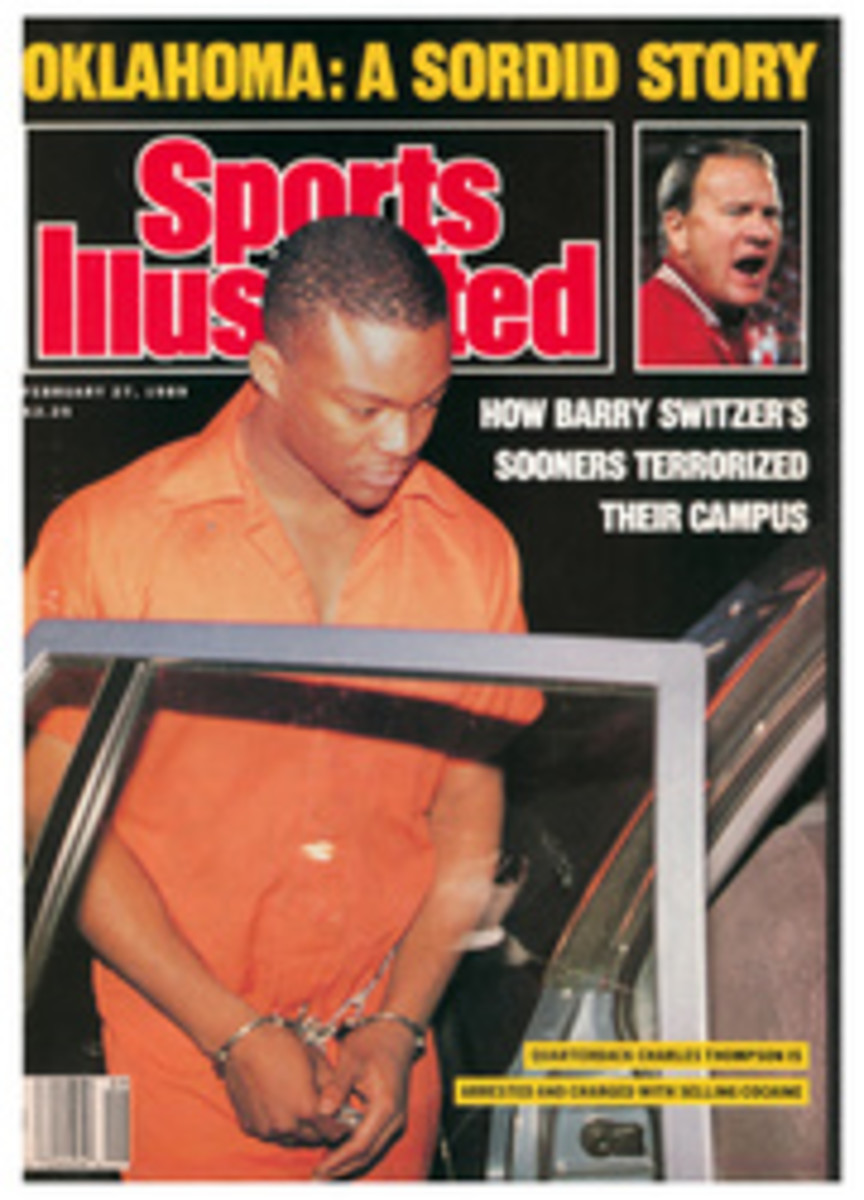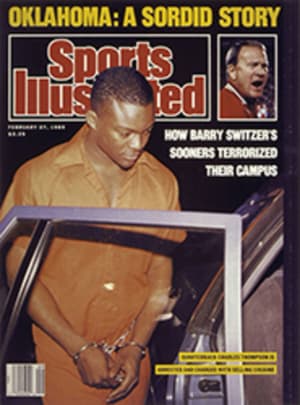
Letters
SCOUTS VS. SCOUTS
As I read your article on the Wilderness Scouts (Good Scouts Indeed, Feb. 6), I felt a sense of shame. That the Boy Scouts of America would resort to such cowardly tactics in an effort to keep the Wilderness Scouts from using the word "scout" is contrary to the spirit of scouting as I remember it. I attained the rank of Eagle Scout, but my achievements were made under the umbrella of loving parents, economic well-being and a stable social structure. The youths who make up the Wilderness Scouts are not that fortunate. They know what true bravery is: going forward despite strong odds against you.
RANDY LAMONT
Solana Beach, Calif.
A few kind and simple phone calls could have done much to prevent the negative press the Boy Scouts are generating for themselves. I learned much in scouting about helping others and about the fundamental rules of citizenship. The Wilderness Scouts seem to be learning the same sorts of things. What are the Boy Scouts trying to do, establish a merit badge in trademark law?
JEFFREY J. HOLLEY, ESQ.
Hartford
Harold Cornwell, founder of the Wilderness Scouts, has a nice program for the youth of Georgia, and he seems to be a caring individual. However, the Boy Scouts of America (BSA) is an organization of the same breed. Although you depict the Boy Scouts as a wealthy Goliath fighting against a poor David, this caricature ignores the fact that the BSA is little more than an aggregate of thousands of local troops, many of which are made up of economically disadvantaged youths. Because the term "scout" is so closely identified with the BSA, confusion can reasonably be expected to occur when others use it. The BSA must have the right to protect its good name.
MAC McLEAN
MICHAEL KIRSCH
New York City
The important thing is to preserve and pass on the ideals of men like Cornwell and Boy Scouts founder Lord Baden-Powell to youngsters who may benefit from them, regardless of the name of the organization the kids belong to.
KARL F. SWENSON
Redmond, Wash.
PROPOSITION 42 (CONT.)
As a student at Georgetown, I feel compelled to dispute the perception that our entire university community stood behind basketball coach John Thompson's anti-Prop 42 boycott (A New Proposition, Jan. 23). While the press correctly reported that our athletic director and our president supported Thompson at the press conference at which he announced his boycott, the applause that greeted Thompson's walkout before our Jan. 14 game against Boston College was hardly proof of unanimous support for his action. The applause was for Thompson the coach, not Thompson the social commentator.
Although a large number of Georgetown students agree with Thompson's position, many others think that while Prop 42 may not be perfect, it is a step in the right direction. It is a shame that Thompson and many other coaches failed to give the measure a chance. Even more shameful is the fact that Thompson's theatrics and worn-out rhetoric took center stage in a debate in which much more needed to be heard from the proposal's supporters.
CHRISTOPHER JORDAN
Washington, D.C.
How many, if any, nonathletes with C averages and combined scores of less than 700 on the SATs are greeted with open arms and a scholarship at Georgetown, Notre Dame, Syracuse, Duke and the like? The protests of Thompson and others are a truly hypocritical and disgraceful commentary on these coaches of student-athletes. College is a privilege earned through a combination of scholastic aptitude and extracurricular activities, one of which is sports. A college's charter is education; its goal is to graduate students who have qualified for a degree. If an athlete doesn't have the potential to realize academic success, whose interests are being served by admitting him to college?
CASEY CANNON
Altamonte Springs, Fla.
My son—1360 on the SATs, 3.5 grade point average, National Merit scholarship semifinalist, starting quarterback on the football team, starting pitcher on the baseball team—is one of 12,000 students who have applied for a spot in next fall's freshman class at Georgetown. Some 10,000 of those applicants—most of whom have impressive credentials—will be turned down. It is ludicrous to believe that a student with a 2.0 GPA and a 700 total score on the SATs should be allowed to occupy a seat in the classroom when so many young people who have put great effort into their studies are told to go elsewhere.
COLLIE F. JAMES III
Piano, Texas
GREEN'S APPROACH
Let's see, Ken Green (Just Having a Fling, Jan. 30) thinks it's funny to joke, "maybe I'll beat up the wife." He also thinks earning another dollar is more important than boycotting South Africa because of apartheid. I guess these are examples of what Green means when he says that he wants "to be the exact same way I am on the golf course as I am off it." He sounds like just the kind of player the PGA Tour doesn't need these days.
MICHAEL P. HALEY
Warrington, Pa.
Ken Green is not the only pro golfer to have participated in lucrative tournaments or exhibitions in South Africa. This is all the more shameful because, unlike the track and field athletes who were suspended by The Athletics Congress for competing in South Africa (SCORECARD, Oct. 24), golfers like Green already have six-or seven-figure incomes that hardly need to be augmented by playing in South Africa.
JOHN STOPA
East Aurora, N. Y.
YIP GRIP
I enjoyed Rick Reilly's account of the AT&T Pebble Beach National Pro-Am (Oh Me, Oh My, O'Meara! 'Feb. 6). However, he said that watching Bernard Langer putt with his "yip grip" (right hand on left forearm) was like "watching an old heavyweight champion wrestle bears." I've had my share of the yips in 30-plus years of playing golf, so I immediately tried Langer's grip. While it looks weird, it almost eliminates left wrist breakdown and certainly steadies the right hand, major causes of the yips. I commend Langer for his accomplishments and feel sure he will overcome his putting troubles. Who knows? Maybe the yip grip is the wave of the future. God knows there are plenty of us out here seeking a cure.
DENNIS W. ANDERSON
Beaver Dam, Wis.
SOLACE IN A SON
Your Super Bowl photography was top-notch (Joe Cool, Jan. 30), but the last two pictures, of the 49ers' Joe Montana (above left) leaving the field and of Bruce Kozerski (above right) of the Bengals holding his son, Matthew, really caught my eye. Upon looking at them, I immediately recalled SI's report on Super Bowl XVI (X'd, O'd and KO'd, Feb. 1, 1982). On the next-to-last page of that article was a pair of pictures (below) of Montana leaving the field and defeated Bengal quarterback Ken Anderson holding his son, Matt. Perhaps this layout is reserved for truly super Super Bowls.
RONNIE JOHNSTONE III
Santa Clara, Calif.
PHOTO
RICHARD MACKSON
THREE PHOTOS
WALTER IOOSS JR.
Letters to SPORTS ILLUSTRATED should include the name, address and home telephone number of the writer and should be addressed to The Editor, SPORTS ILLUSTRATED, Time & Life Building, Rockefeller Center, New York, N.Y. 10020-1393.

